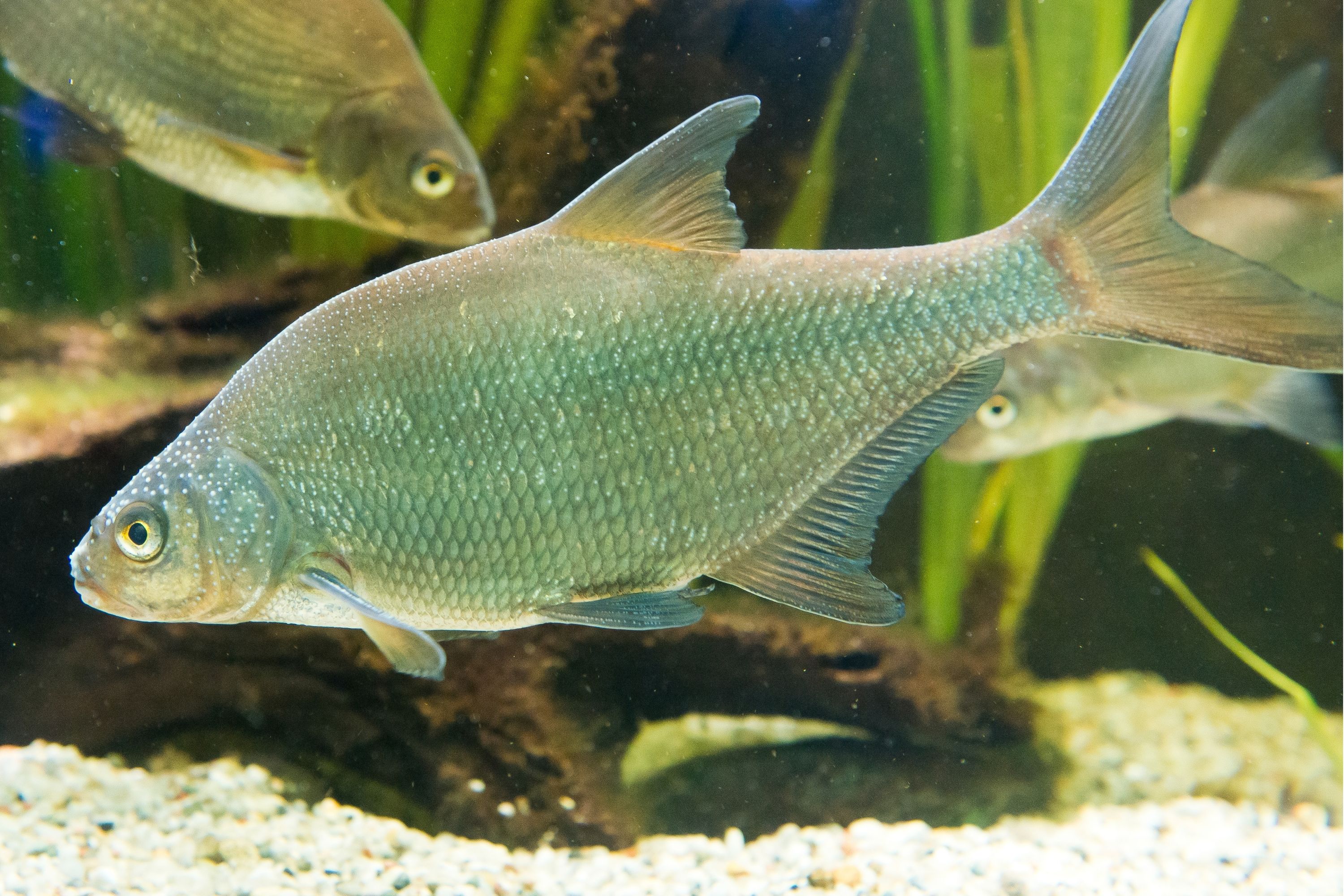Common bream
(Abramis brama)

Description
The common bream, freshwater bream, bream, bronze bream, or carp bream (Abramis brama), is a European species of freshwater fish in the family Cyprinidae. It is now considered to be the only species in the genus Abramis. The common bream's home range is Europe north of the Alps and Pyrenees, as well as the Balkans. They are found as far as east as the Caspian Sea, the Black Sea, and the Aral Sea. The common bream lives in ponds, lakes, canals, and slow-flowing rivers. The bream is usually 30 to 55 cm (12 to 22 in) long, though some specimens of 75 cm (30 in) have been recorded; it usually weighs 2 to 4 kg (4.4 to 8.8 lb). Its maximum length is 90 cm (35.5 in),the recorded weight is around 9.1 kg (20 lb). The common bream has a laterally flattened and high-backed body and a slightly undershot mouth. It is a silvery grey colour, though older fish can be bronze-coloured, especially in clear waters. The fins are greyish to black, but never reddish. The common bream can easily be confused with the silver or white bream (Blicca bjoerkna), in particular at the younger stages (see picture). The most reliable method of distinguishing these species is by counting the scales in a straight line downwards from the first ray of the dorsal fin to the lateral line. Silver bream have fewer than 10 rows of scales, while common bream have 11 or more. At the adult stage the reddish tint of the pectoral fin of the silver bream is diagnostic. Like other Cyprinidae, common bream can easily hybridise with other species, and hybrids with roach (Rutilus rutilus) can be very difficult to distinguish from pure-bred bream. The common bream generally lives in rivers (especially in the lower reaches) and in nutrient-rich lakes and ponds with muddy bottoms and plenty of algae. It can also be found in brackish sea waters. The common bream lives in schools near the bottom. At night common bream can feed close to the shore and in clear waters with sandy bottoms feeding pits can be seen during daytime. The fish's protractile mouth helps it dig for chironomid larvae, Tubifex worms, bivalves, and gastropods. The bream eats water plants and plankton, as well. In very turbid waters, common bream can occur in large numbers, which may result in a shortage of bottom-living prey such as chironomids. The bream are then forced to live by filter feeding with their gill rakers, Daphnia water fleas being the main prey.
Taxonomic tree:







